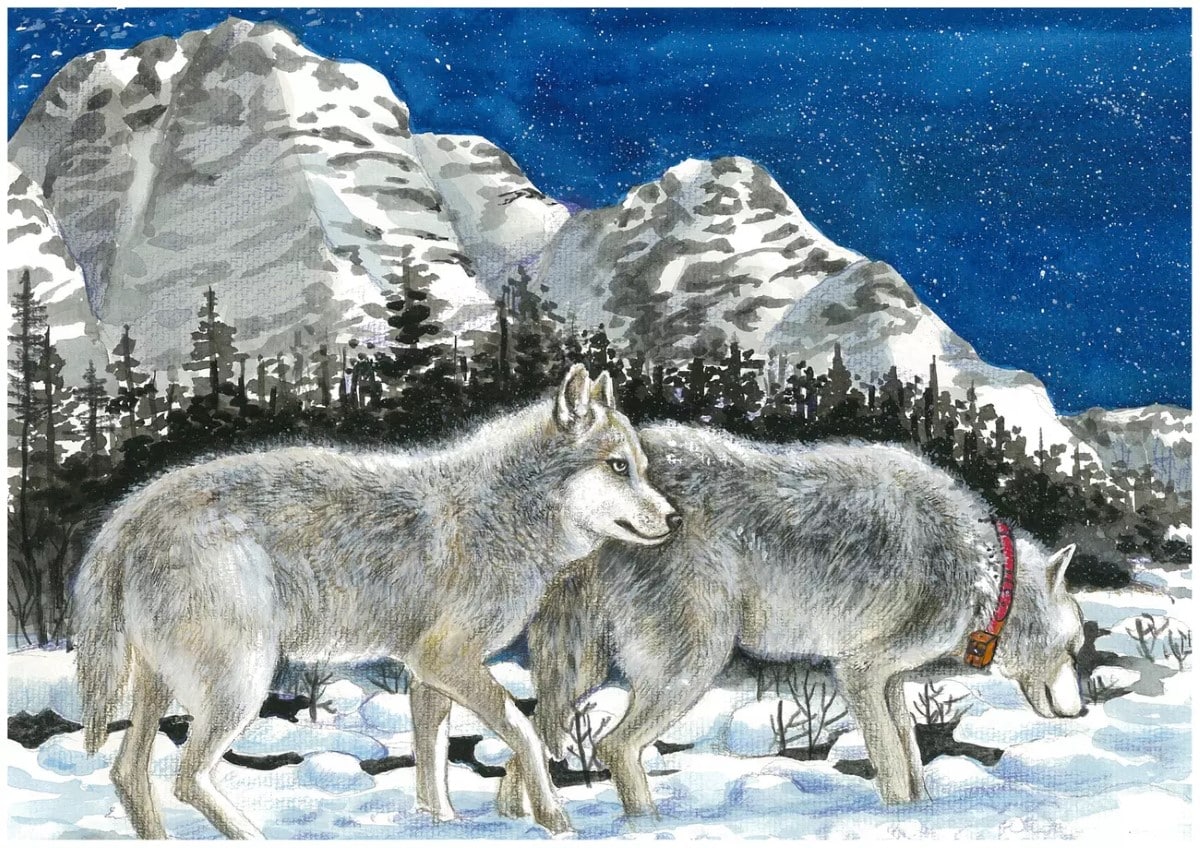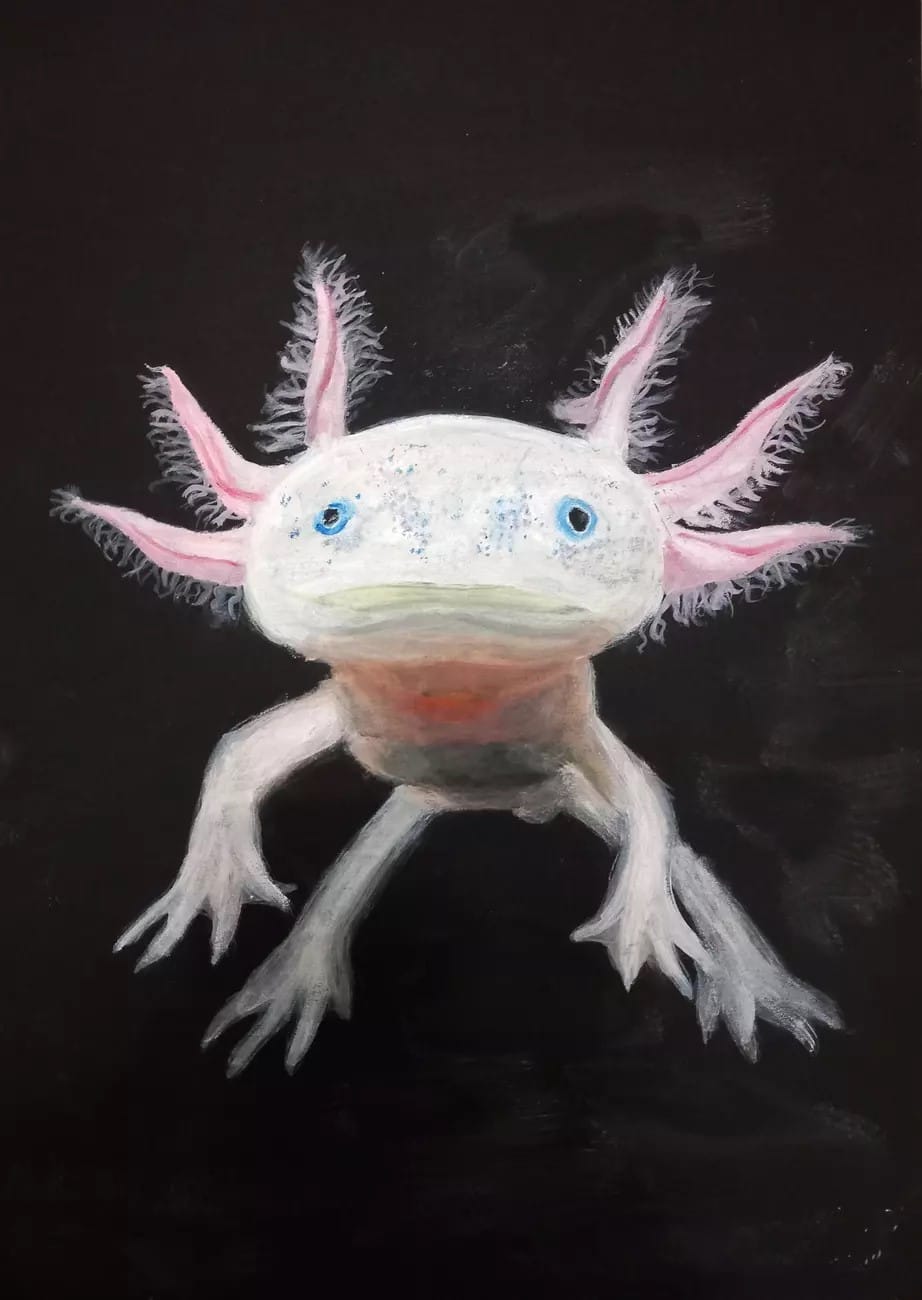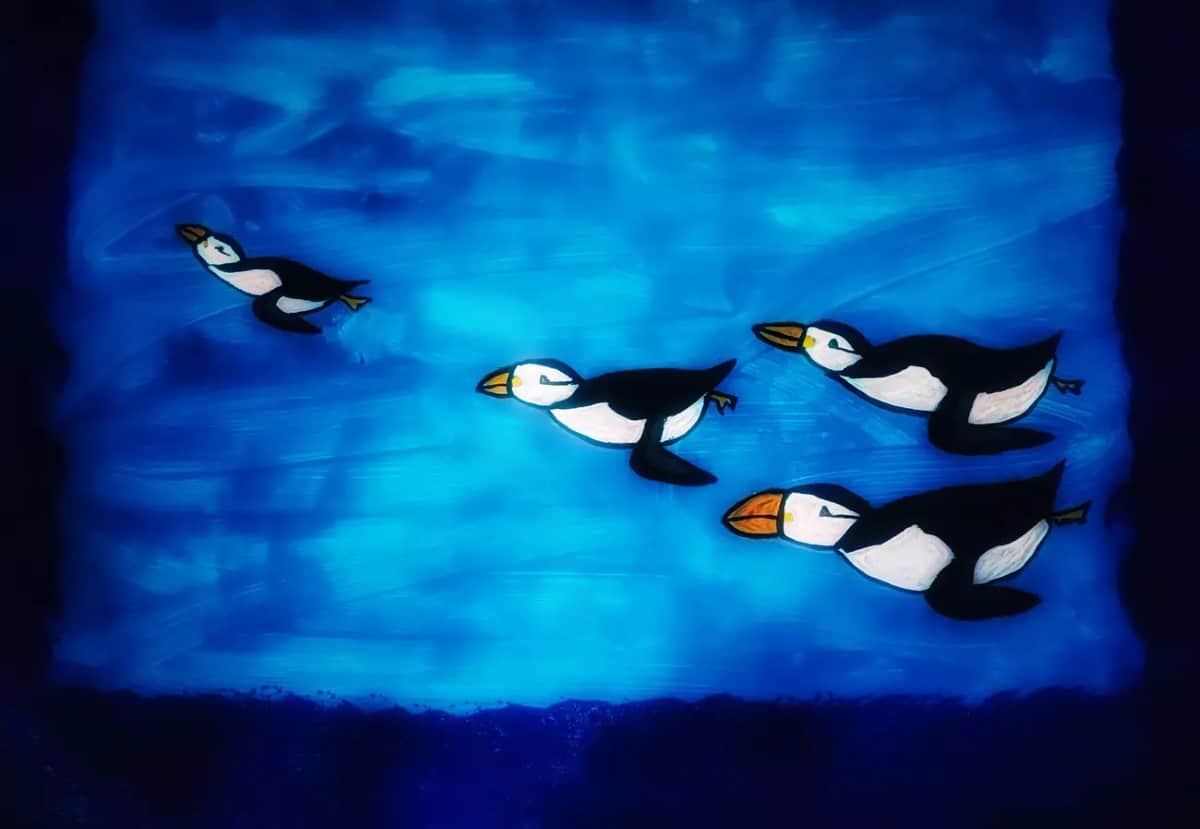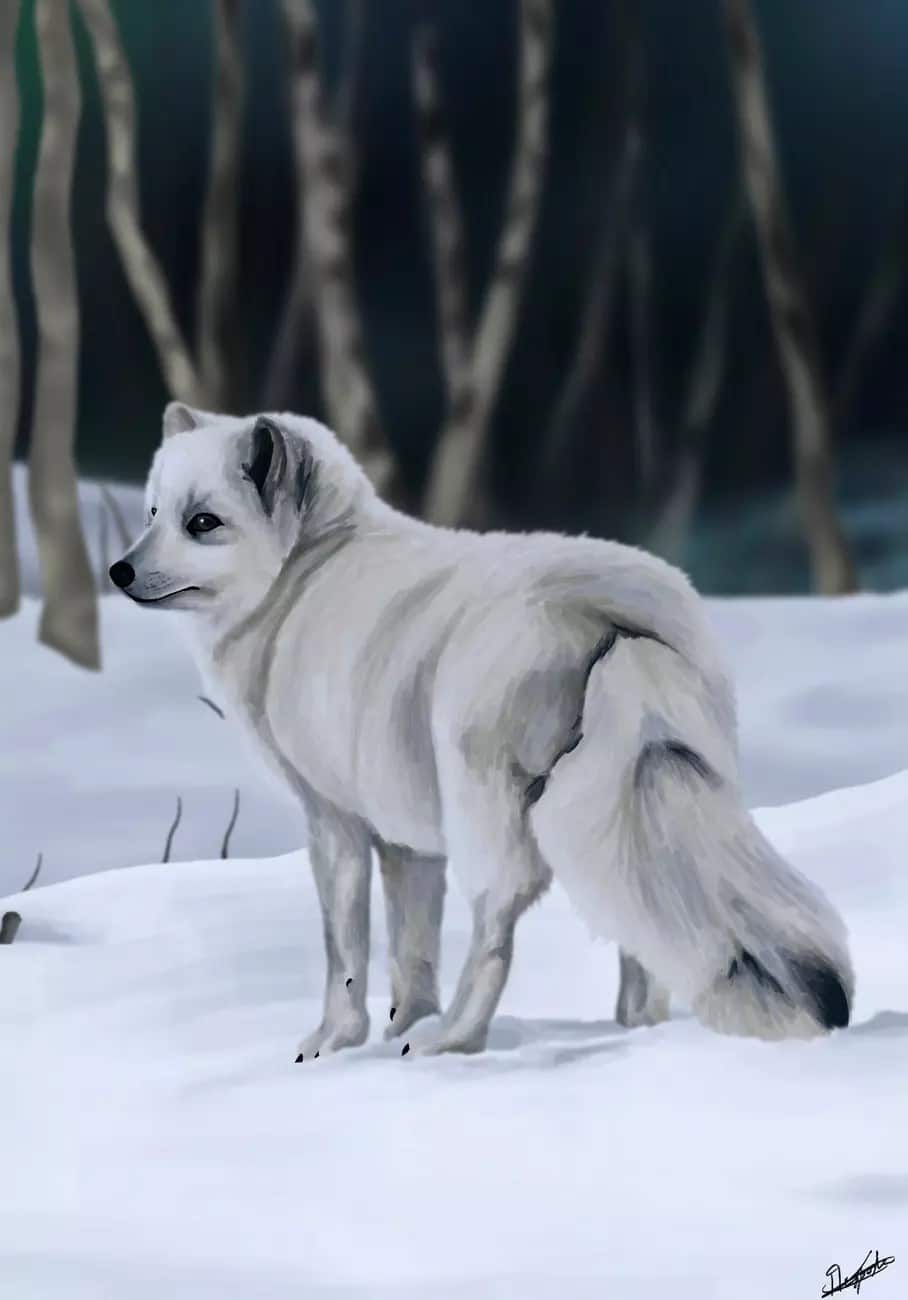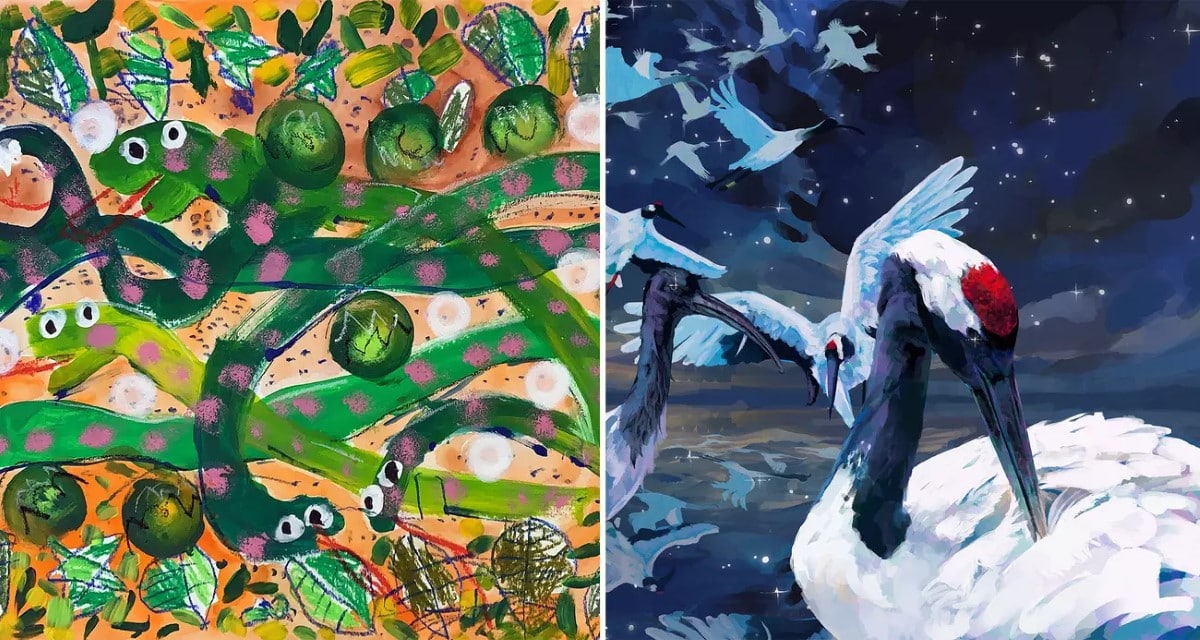
Left: Isaac Alvin Lam, 4, Hong Kong. Winner, Traditional art medium and Best of ages 4-6 | Right: Noh Sangeun, 18, Singapore. Winner of Digital art medium
Over 3,000 children from around the world showed off their artistic talent in support of wildlife conservation. The World Wildlife Day International Youth Art Contest is organized every year by the International Fund for Animal Welfare (IFAW) to honor the world’s biodiversity. In this sixth iteration of the contest, children from 141 countries submitted art in line with the theme, “Connecting People and Planet: Exploring Digital Innovation in Wildlife Conservation.”
The theme aimed to showcase the importance of digital technology to safeguard biodiversity, and as such, many entries featured species that benefit from technology, such as camera traps, and tracking devices. Art from 15 semifinalists were selected by a panel of experts that included last year’s winner, Poonyisa Sodsai.
“This was a record-breaking year for global submissions, and the talent displayed in the art pieces is extraordinary,” said Danielle Kessler, U.S. Director of the International Fund for Animal Welfare.
“The world’s biodiversity is sadly disappearing at alarming rates, and the passionate submissions gathered from around the world reinforce a dedication to wildlife conservation from future generations, which is exactly what the world needs. It is an honor to continue hosting this global contest that provides them with a platform for such expression.”
The contest, which is divided between traditional and digital art, as well as different age groups, named two overall winners. Four-year-old Isaac Alvin Lam won the top prize for traditional art medium thanks to his delightful painting of snakes. Eighteen-year-old Noh Sangeun topped the digital art medium category for his beautiful composition featuring cranes.
“UNDP would like to warmly congratulate Isaac and Noh,” said Midori Paxton, Head of Ecosystems and Biodiversity at the United Nations Development Programme. “Their paintings capture how a young person can be inspired despite the enormity, in a variety of ways, to help protect and conserve species.”
Scroll down to see all the talented finalists, and then visit IFAW’s website to learn more about the important work they do to protect our planet’s biodiversity.


